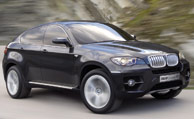By Sam Moses, New Car Test Drive
Overview
The rear-wheel-drive Chevrolet Camaro looks new and it is, but it was built from existing hardware, starting with the chassis architecture of the impressive Pontiac G8. Its chief engineer, a true-blue car guy, had three instructions, to make it: 1 drop dead gorgeous; 2. high performance; and 3. affordable. The Camaro succeeds on all three counts and is a breath of fresh air for GM.
We found the handling, ride and brakes exceptional. The styling is stupendous. Inside, the the instrumentation slips back into GM’s too-hard-too-break habit of trying too hard to be clever with gauges.
The Camaro LS and LT models use a potent and sweet-sounding Cadillac V6 that makes 304 horsepower, with a six-speed manual transmission standard and six-speed automatic (with semi-manual shifting) optional.
The SS has the killer V8, a 6.2-liter Corvette engine making 400 horsepower with the optional six-speed manual automatic, or 425 horsepower with the standard six-speed manual. It uses the same suspension design with firmer shocks, springs and anti-roll bars, producing the same result under more demanding circumstances: great handling, great ride.
Walkaround
When you look down on the new Camaro from a balcony, you see the lines of the 1963 fastback split-window Corvette. This is as planned by its young designer, Sang Yup Lee, who came to the U.S. from Korea as a boy and grew up in the California car culture.
There are subtle twin-cockpit humps on the hood, that can be glimpsed at the top of the steeply raked 67-degree windshield, helping to produce a 0.37 Cd in the LS and LT, and 0.35 in the SS.
But the long hood with its v-shaped shark nose and black wide mesh grille (with simple headlights intended to be reminiscent of a ‘69 Camaro) is what catches your eye, makes you sigh, and triggers your longing. That too is by careful design. Starting with the architecture of the impressive Pontiac G8, the rear wheels were moved forward six inches, the fronts forward 3 inches, the windshield back 3 inches, and for a final touch lowering the front suspension. (Balance and handling? Check.)
All models use an aluminum hood with a 2.5-inch power dome intended to look like cowl induction but actually having no function other than appearance.
The SS has an additional wide and thin black simulated intake on the nose, the easiest way to tell whether it’s a V8 or V6. Otherwise, the V6 can pretty much pass, a bonus for $23k. Styling gills located just forward of the rear wheels add another nice touch. Even though the power dome, hood intake, cooling gills are not fuctional, they all work as styling enhancements, and don’t come across as phony.
The new Camaro captures the look of the original ‘67, while not being seduced into retro clunkiness, virtually, and beautifully, there’s no chrome.
Interior Features
The interior materials of the new Camaro are good, but the design doesn’t rise to the level of the exterior. The instrumention leaves something to be desired, with recessed speedo and tach stylized in square chrome housings, a nod to the classic Camaro interior. But that was 1967. However, back then they didn’t have LED light pipe technology, an ambient light option that gives the cabin a warm glow.
The stitched leather wrap on the steering wheel is nice, although the three-spoke design doesn’t make you say wow. The cloth bucket seats are comfortable, with decent bolstering, although we wonder if it’s enough to keep an aggressive driver in his or her place during hard cornering. The front seat slides 8.5 inches and the steering wheel tilts and telescopes, so drivers of all sizes will fit; based on Camaro sales history, lots of women buyers are anticipated. The standard cloth upholstery is good, with excellent leather on available in black, gray, beige and two-tone Inferno Orange.







